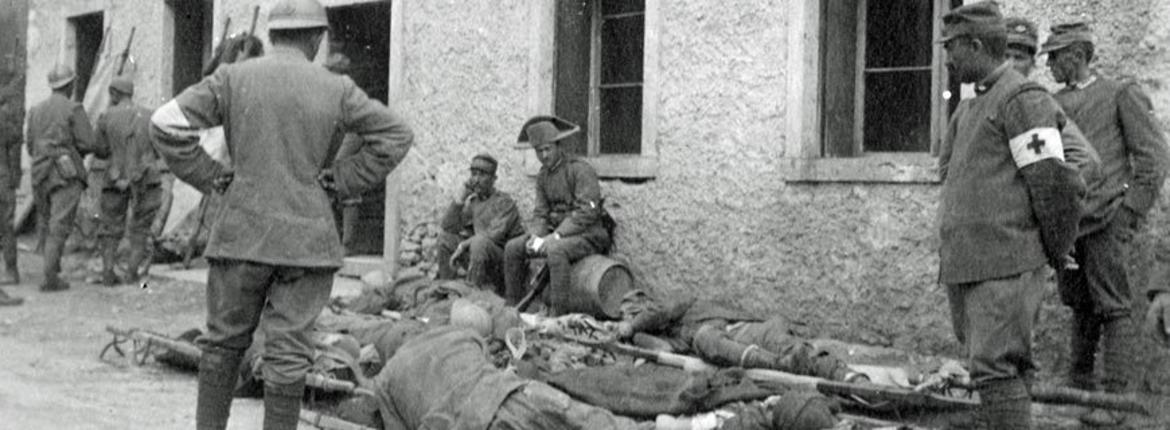Wounded. Images of the Great War
Photographic exhibition of health issues during the Great War

During the First World War, more than a million Italian and about 650,000 Austrian soldiers were wounded.
Italian soldiers with permanent invalidity exceeded 450,000.
70% of the wounds were caused by splinters and stones thrown out by explosions that could mutilate the body in various ways. The most common practice in case of serious injuries to the limbs was amputation, but in the case of extensive abdominal and chest injuries, doctors were helpless. Facial wounds led to the extensive field of plastic reconstructions.
Blast waves sometimes caused deadly injuries, lung damage and hemorrhaging to the brain or spinal cord. Damage to the nervous system, due to shell shock, was incalculable and rendered thousands of men temporarily or permanently disabled.
There were numerous avalanches or work accidents.
The most common diseases were due to the lack of hygiene (dysentery, typhoid, cholera) and the cold (freezing, tuberculosis, pneumonia, bronchopneumonia).
Pictures from the museum's photo archive show suffering people, the recovery and transportation of the wounded, and the organisation of the health care system.

